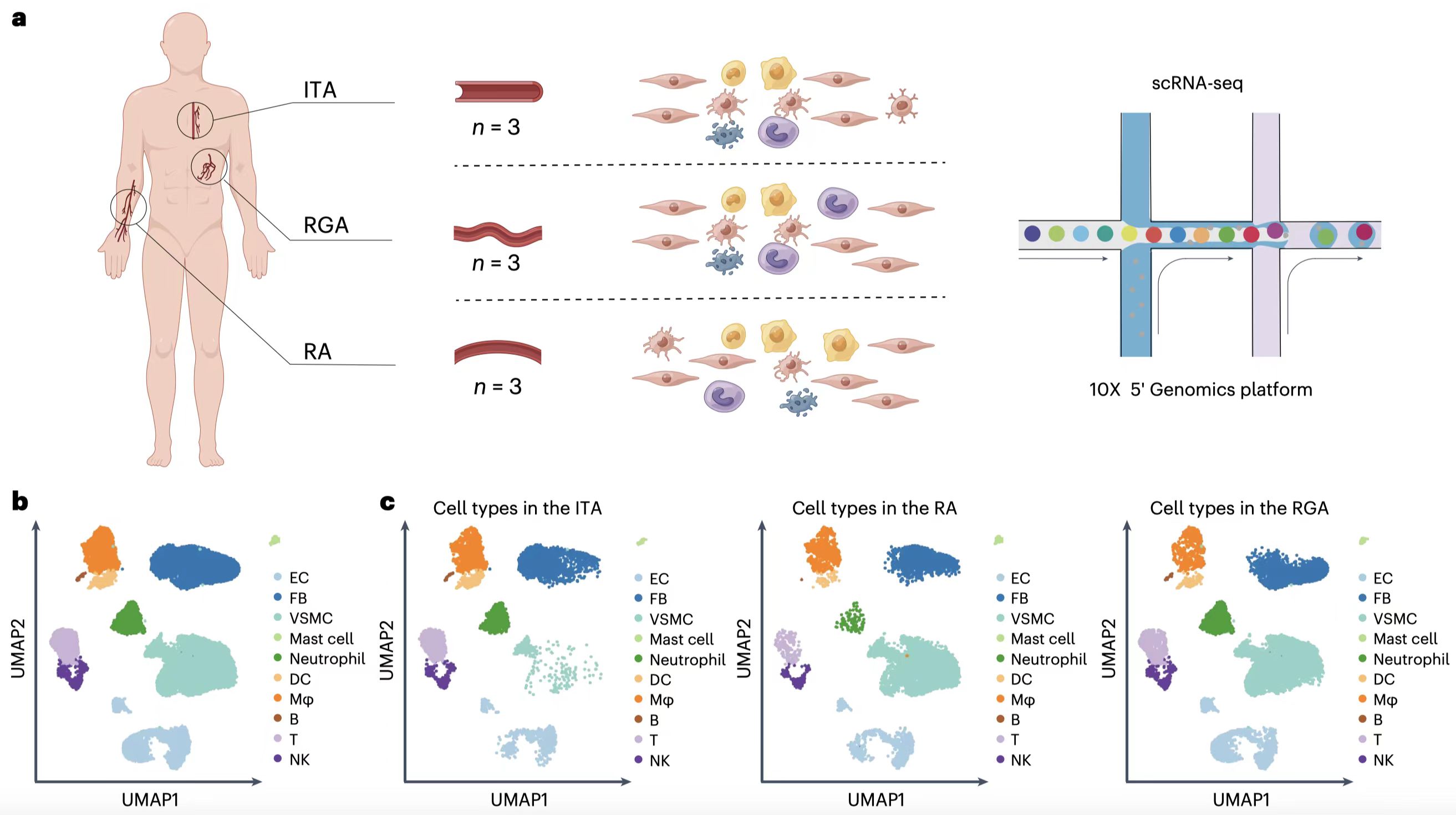Coronary artery bypass grafting (CABG) is a surgical procedure that improves blood flow to the heart tissue and can effectively treat myocardial ischemia caused by coronary artery disease. In CABG, a healthy blood vessel is taken from the patient and be connected to the diseased artery so that the blood can bypass the blocked coronary artery region. Healthy blood vessels used for CABG are mainly arteries from other parts of the patient's body, including the internal thoracic artery (ITA), radial artery (RA), and right gastroepiploic artery (RGA). Among these donor arteries, ITA has the best long-term outcome, while RA and RGA are prone to intimal hyperplasia, atherosclerosis and vasospasm.
WANG Xiujie's group at the Institute of Genetics and Developmental Biology (IGDB) of the Chinese Academy of Sciences, in collaboration with SONG Jiangping's group at Fuwai Hospital of the Chinese Academy of Medical Sciences, used single-cell RNA sequencing (scRNA-seq) to elucidate the cell type composition and gene expression profiles of ITA, RA and RGA.
The researchers found that these three types of donor arteries differ in lipid particle uptake, hemodynamics, vasospasm and fibrosis. Combined with experimental validation in human cells and mice, the following four optimized strategies for CABG were proposed: inhibition of macrophage migration inhibitory factor could reduce intimal hyperplasia of RA; potassium channel openers could counteract calcium antagonist-unresponsive vasospasm in RGA; inhibition of CREB5 and GDF10 could reduce extracellular matrix deposition and fibrosis in RA and RGA; PCSK9 inhibitors are recommended for lipid-lowering treatment in ITA.
The study is expected to provide guidance for the establishment of clinical CABG surgical strategies and the selection of post-operative medications.
This study was supported by the National Natural Science Fund of China, the CAMS Innovation Fund for Medical Sciences, and the National High Level Hospital Clinical Research Fund, etc.
Profiling of the 38,814 single cells isolated from three types of donor arteries. a. Schematic of overall study design; b. UMAP plot of the integrated donor artery datasets, with cells colored according to the major cell types; c. UMAP plots showing the composition and similarities of major cell types in each donor arteries. (Image by IGDB)







